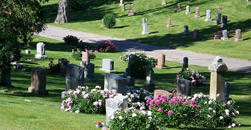Franklin Simmons: A forgotten giant of American sculpture got his start in Lewiston - Lewiston Sun Journal
Jul 27, 2019Sun Journal photo by Russ Dillingham LEWISTON — One of the 19th century’s most illustrious sculptors, who went to work in a cotton mill at age 15 and learned his art using clay from the banks of the Androscoggin River, got his start professionally in a tiny Main Street studio here before the Civil War.Franklin Simmons entered the field with nothing but empty pockets, a tub of potter’s clay, a few modeling sticks and big dreams that, against all odds, somehow came true.He died a wealthy man in Rome with his work on display around the country, hailed as a leader in his field, renowned for his bronze and marble images of historic figures from Alexander Hamilton to Henry Wadsworth Longfellow.Not all of his legacy rests far afield, though.Two of Simmons’ full-length bronze statues stand within a mile of his old workshop, while two of his earliest pieces — marble busts of a pair of dignified fellows — reside on a shelf behind the reference desk of the Lewiston Public Library.At least five other works from the largely forgotten artist’s early years are missing.One of them may have gone up in flames after showman P.T. Barnum apparently displayed it in a legendary New York City museum under the pretense it came from ancient Greece. The others, though, have simply slipped out of sight.The Smithsonian has a list of 97 known works by Simmons, including a number in and around the U.S. Capitol in Washington. The four that exist on public view in Lewiston and Auburn are not among those cited.In addition to the two busts at the library, Simmons also created the Civil War soldier standing guard in Lewiston’s Kennedy Park and a full-size bronze of philanthropist Edward Little, completed in 1877 and restored a few years ago, that watches over his namesake Auburn high school.Whatever else Simmons created that may remain in the community is unknown.LEWISTON’S MISSING SIMMONS SCULPTURESWhen Simmons died in Rome in 1913, The New York Times noted that one of his old friends in Lewiston proudly possessed his f...



